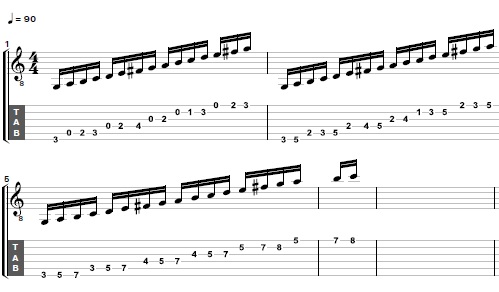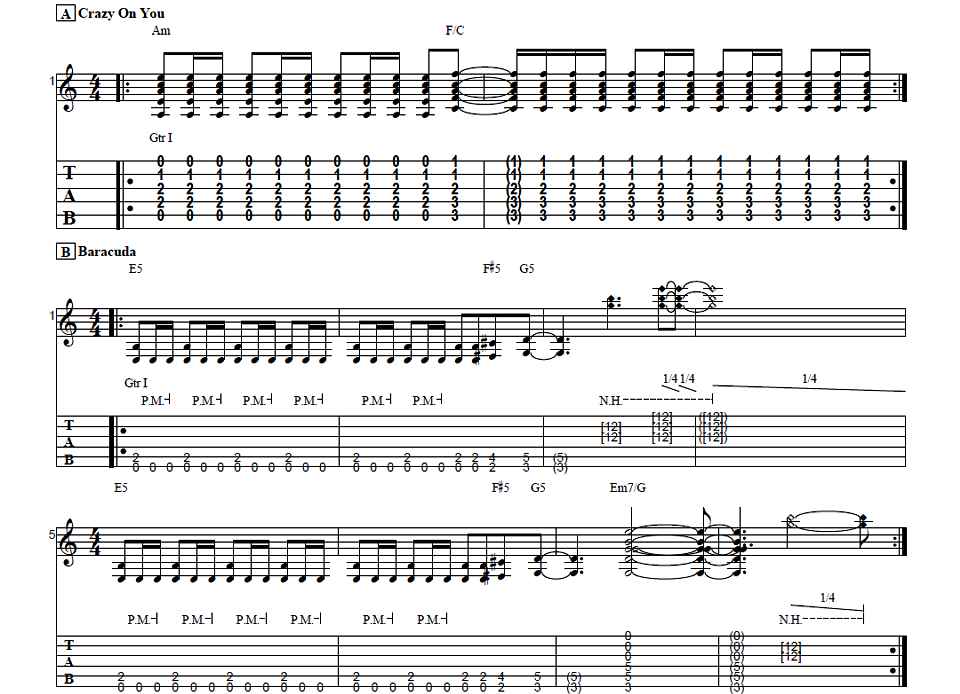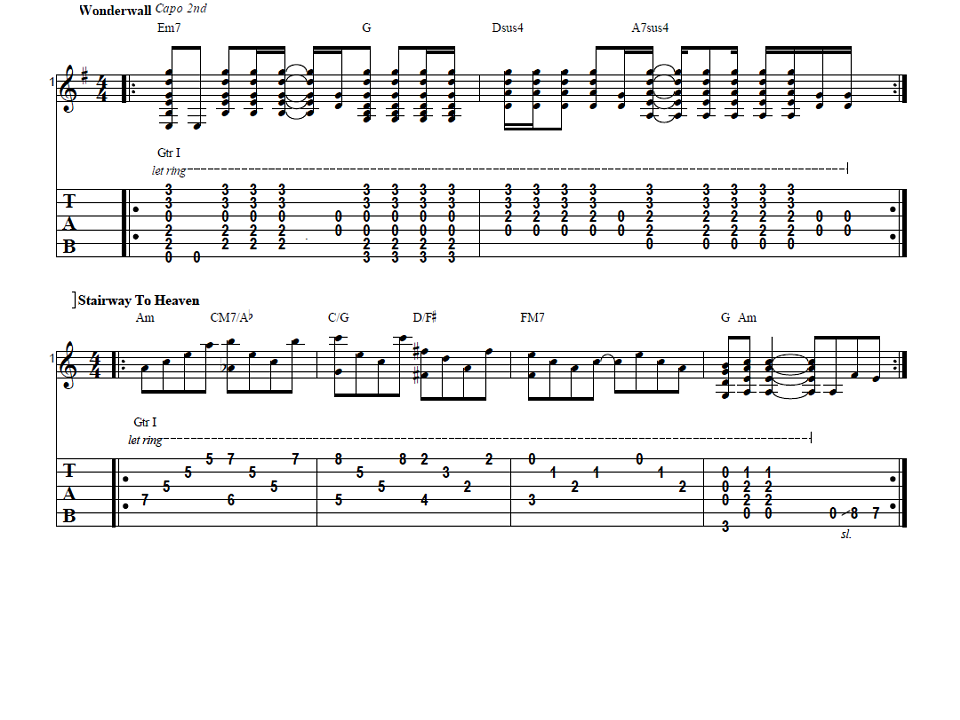Check out this free lesson from Guitar Control instructor Darrin Goodman on a must know major scale and how to make it work for you in your playing. Be sure to click the link for the free tabs so you can easily follow along.
[contentwall]

[/contentwall][ninja-popup ID=715]
Introduction
Hey everybody, how’s it going? This is Darrin with GuitarControl.com bringing you this video lesson. Today I want to show you how to play the major scale and how to make it into an arpeggio and just how to utilize this for lots of different things in your playing and how to use this scale to answer a lot of questions that you probably already have and if you don’t have them yet you will. So be sure to click on the link down below so you can get the tabs for this and easily follow along. Let’s get close up and take a look.
The Major Scale
All right first so for this example today we’re going to be doing this in the key of G major now the thing that’s nice about this is that once you learn this pattern it doesn’t matter what key you’re in it’s always the same sequence and I’ll explain that here in a second. So starting off we’re starting on the third fret of the low E because that’s a G. So whatever key you’re in is what the first note will be and where this scale pattern will start from.
So for this pattern we’re starting here, we have two whole steps so I’m going three five and then seven and I’m using my first second and then fourth finger. Now some people find it more comfortable to use their first finger, then their third and then their fourth finger like that. That is very uncomfortable for me but either way you want to do it is fine, just whichever way suits you better. So two whole steps and then we’re gonna move to the A string and do the same thing, third fret, fifth fret and seventh fret. Now we’re gonna move to the fourth string, the D string, and we’re going to start on the fourth fret and now it’s a half step and then a whole step, so four, five, seven and I’m using my first second and then fourth fingers. Then we go to the G string and do the same thing, four, five. Now when we go to the B string, your second string, we have to move up a half step again, so now we’re starting at the fifth fret and it’s a whole step and a half step so five, seven, eight and then the same thing on the first string, your high E string, five, seven, eight and in this case I’m using my first third and then fourth finger.
Scale Variations and Tips
okay so a couple of things first with this. When you’re ascending the scale, so let’s say we’re starting at the bottom and working our way up. You want you don’t want to go and then take your fingers off as you go up. Leave your trailing fingers down, it doesn’t matter, it doesn’t affect the sound because whatever the highest fret you’re playing is every fret below that will be dead. So if I’m playing here, you know on the seventh fret and I can play all these other notes here on the sixth string and it does not make any difference. So the reason that you want to do that is so that way if you’re doing a lick that maybe it has pull offs or you’re just going back to the previous notes, your fingers will already be in that place and it’s just one less step to have to take later. So as you ascend the scale always leaving those trailing fingers. Now when you descend, obviously you can’t do that. But also another thing, notice I’m not really lifting my fingers up really high, you don’t want to lift them any higher from the fretboard than is absolutely necessary. So by learning the scale what we’ve done is we’ve learned what notes are in the key. So here we’re looking at the key of G major, so now by playing the scale we can identify what the notes are in the key of G major; G, A, B, C, D, E and F# and then we’re back to G again. So that tells us that the key of G major has one sharp and it’s F#.
Now the shape you want to play, let’s say you wanted to play an A major scale, so we would move up here to the fifth fret, which is A, and play that same shape. Now we’ve just played all the notes and they’re in A major or if we started at the first fret we’d be an F, if we started at the fourth fret we’d be at G. It’s just one shape you can you know move it around. Now another thing too that you really want to be working with is to make sure that you’re alternate picking. So when i play this first note that’s a down stroke then this one would be an up and then down and then when I go to the next string even though I’m going to the next string it’s an up because alternate picking is just down up down up down up. So I really recommend that you make sure that you work with alternate picking.
Chord Theory
Now something I said earlier that there were some questions that could be answered with this. So you’ll hear myself and other instructors or just maybe just talking to other guitar players and they’ll say that such and such note, that’s the fourth of that key or we’re going to take this chord and we’re going to add the nine to it or things like that. So what they’re referring to when they say these numbers is the notes from the scale.
So an example is that a major chord is what’s called a triad, so it’s three notes. So the three notes that make up a major chord are the first, third and fifth note of the major scale. So if we wanted to know what the notes were that made up a G major chord we go to G and we play our major scale one two three, so we know that we got the notes G and B, four five D. One two three four five, so that’s referring to the three notes G, B and D, is what makes up a G major chord and then it would be the same thing as wherever you moved it around. And then if it was a minor chord, it’s one flat three and five so, one two three, here’s the third which is B. We move it down a half step makes it flat four or five so G B D or excuse me G, B flat, D, is what are the notes that make up a G minor chord, because we’ve taken that third and we flattened it.
Soloing and Arpeggios
Okay so then the other thing I wanted to show you is that you know you can use this scale for soloing. If you’re just playing up and down the scale it’s not very musical sounding. So if you know you’re soloing with it you know you’re going to be doing more things like that, but a simple way to really get a really nice sound and a good melody is to play the arpeggio. So what an arpeggio is when you’re playing the notes of the chords separately, so in the case of G major the three notes that make that up are G, B and D, but if we were doing a major seventh chord, G major seven, then we’re also going to add that seventh tone. So one two three four five six seven f sharp, so we have G B D and F sharp. So when we play the scale to get the arpeggio, you just skip so we play the first note, we skip the second one and play the third, we skip the fourth note and we play the fifth, we skip the sixth note and we play the seventh. So now we’ve just played the four notes that make up the notes of the chord of G major seven.
Now you can continue to go on through the scale that way so we have to skip a note but since we’re to the seven we have to play the next note which is always a half step away, which is eight because the eight is the same as one, nine is the same as two, ten is the same as three, it’s just that it’s one octave higher because there’s only seven notes that are in the scale and it starts over again, G, A, B, C, D, E, F# and back to G again. So now we’re here at eight so we skip the next note and so on and so forth.
Conclusion
All right so there you have it, it’s the major scale and the major arpeggio, now you have the scale you can do the arpeggio and you know build a little bit of music theory. I know that learning scales and playing scales isn’t the most exciting thing in the world, but you know it is a necessary evil. It’ll make you a better player. Knowledge is power the more you and understand about not just this is a chord but what it is you’re playing the better musician you’ll be.






